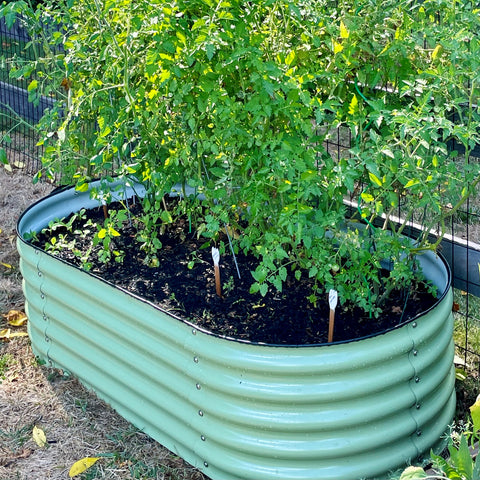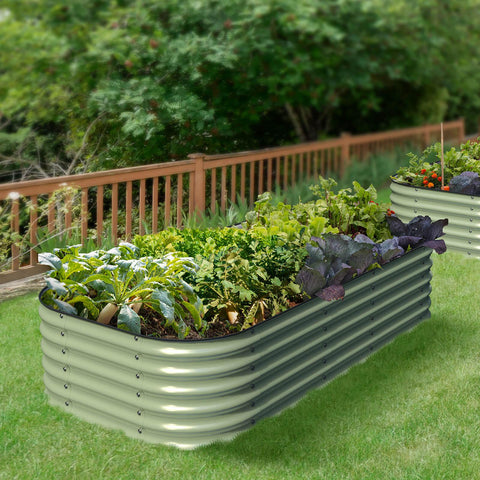Tips from Olle Garden Bed: How to Deal With The Frost Damage On Potatoes
In the United States, potatoes topped the list as the most popular vegetable. It's easy to grow potatoes in your home garden. These starch tubers are easy to solidify and store for use in winter. However, potato gardeners often think of a problem. Can potatoes survive the frost?The following content also has some reference value for raised garden beds.
Potatoes and late spring frost
If you ask: "Can potatoes handle frost in spring? The answer is yes. Suppose your newly planted seed potatoes have started to give out green leaves, when Mother Nature decides to play tricks on you. You wake up in the morning and encounter unexpected frost.
When you inspect the garden, you will notice that the ground growth of potato plants is damaged. Light frost may darken the edges of leaves, but severe frost can kill growth to the ground. Should you replant? The good news is that the underground seed potatoes are protected if you have frost instead of freezing through the soil.
It may take a week or two for seed potatoes to grow new. If you don't see any new growth after three weeks, it's time to dig down and check the seed potatoes. Soil that is too wet, too dry, or too cold will delay germination and may cause seed potatoes to rot.

Does frost kill potatoes in autumn?
As in spring, autumn frost damages potato leaves. This is usually not a problem, as the best time to harvest full-size potatoes is after the leaves have completely died. Since it takes about 120 days to grow full-size potatoes, the schedule for harvesting full-size potatoes is usually from the end of August to the beginning of September. Even early frost that kills leaves is unlikely to have much impact on potato harvest.
When gardeners ask, "Are potatoes frost resistant?" They may refer to tubers, not plants. In this case, as long as the tuber is completely buried in the ground, it will not be damaged by freezing. However, if the ground freezes, potatoes may be damaged.
Suppose you have a short growing season, with frost in late spring and early autumn, or you are busy, and you plant potatoes a little late. Now that the frost has killed the autumn leaves, should you harvest the potato crop?
Once the plant dies, potatoes stop growing. If potatoes are small, they can be harvested immediately and used as new potatoes. Full size potatoes can be left underground for another two weeks to harden the skin and start the curing process. However, if too much rain makes the soil saturated or there is a danger of freezing, it is better to harvest potatoes as soon as possible.

Identify frostbitten potatoes
Freezing or freezing damage to potatoes (tubers) may be difficult to detect. When potato tubers protrude from the ground, freezing damage may occur. The sun turns the naked potatoes green. Therefore, any green potato that has experienced frost should be suspected. Potatoes near the surface or in low-lying areas are the next possible candidates for frost and frost damage. Check the side of the potato closest to the soil surface for signs of stickiness or wrinkling.
The flesh or interior of a frostbitten potato usually turns gray or reddish brown. When potatoes are cut, this may appear as spots or streaks. Frozen or frozen potatoes not only shorten their storage life, but also are likely to turn black after being cooked.
Therefore, seriously damaged potatoes should be discarded. By cutting the damaged part and using the undamaged part immediately, potatoes with less local damage can be saved. However, freezing converts starch into sugar. Potatoes that have experienced frost or frozen damage may have a strange sweet taste